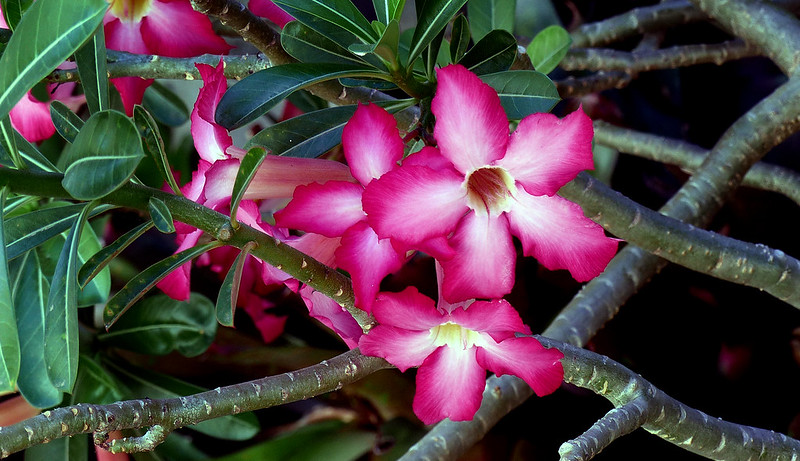Adenium Flower Bonsai Facts
- The Adenium Flower Bonsai represents a remarkably hardy species of flowering plant which also is a member of the dogbane family.
- This plant remains endemic only to certain arid regions. Individuals typically occur in areas south of the Sahara Desert in regions including Sudan, Mauritania, and Senegal.
- The tree also occurs in other parts of Africa and Arabia. There, it inhabits the tropical and subtropical eastern and southern regions
- The species also sometimes goes by the names of kudu, mock azalea, and desert rose, among others.
Related Articles
Adenium Flower Bonsai Physical Description
Depending upon the variety, the Adenium Flower Bonsai appears as either a deciduous succulent shrub or an evergreen. Some of these also attain a height of as much as 9.8 ft (3 m).
In most varieties, the leaves typically appear arranged in a natural spiral pattern. These also generally present themselves in clusters, near the ends of shoots.
All leaves possess a thick, somewhat leather-like texture. In most varieties of this natural wonder, the blooms will be tubular in shape. The flowers also generally present as either pink or red, with light blue shadings.
- Kingdom: Plantae
- Phylum: Angiosperms
- Class: Eudicots
- Order: Gentianales
- Family: Apocynaceae
- Genus: Adenium
- Species: Adenium obesum
Adenium Flower Bonsai Cultivation
The rather remarkable Adenium Flower Bonsai has long been a popular plant in homes and rock gardens. This is especially true in regions possessing temperate climates.
The plants need a rather sunny location, with at least a moderate indoor temperature during the winter. It thrives best with a xeric regimen of watering.
Generally, it reproduces either by seeds or via stem cuttings. There are also multiple hybrid species of Adenium Flower Bonsai, most of which propagate through grafting.
In many varieties, the sap also develops as quite toxic. This toxic sap is still commonly used to create poison-tipped arrows for hunting in parts of Africa. How unique.
Species Sharing Its Range
Check out our other other articles on 6 Lovely Lesser-Known Legumes, Staghorn Coral, Flume Gorge, Platypus, Hemlock Looper, Chinese Giant Salamander, Pesquet’s Parrot, Serval

